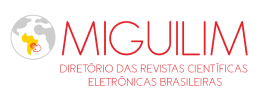The role of semantic web in the big data process
DOI:
https://doi.org/10.5007/1518-2924.2018v23n53p137Keywords:
Semantic Web, Big Data, Semantic Web TechnologiesAbstract
The Semantic Web presents a theoretical corpus and a range of technologies and applications that demonstrate its consistency, including in use of its concepts and its technologies in other scopes than the Web. In this sense, Big Data's projects can take advantage of the application of principles and developments in the area of the Semantic Web, to improve the processes of data analysis, especially in the insertion of semantic characteristics for data contextualization. Thus, this research aims to analyze and discuss the potential of Semantic Web technologies as a means of integrating and developing Big Data applications. An exploratory qualitative methodology was used, where we searched for points of the literature and documentary texts dealt with the convergence between the Semantic Web and the Big Data. Four main points were identified and discussed: the application of Linked Data as a data source for Big Data; the use of ontologies in data analysis; the use of Semantic Web technologies to promote interoperability in Big Data scenarios; and the use of machine learning to extract data automatically and convert them to Semantic Web standards. Therefore, it was possible to identify that the Semantic Web, especially with regard to its technologies, can help Big Data, since it provides a paradigm different from those applied mainly in data analysis.Downloads
References
BANSAL, S. K. Towards a Semantic Extract-Transform-Load (ETL) Framework for Big Data Integration. IEEE, jun. 2014. Disponível em: < http://bit.ly/2ulZ3a5>.Acesso em: 22 jul.2017.
BERNERS-LEE, T.; HENDLER, J.; LASSILA, O. The semantic web. The Semantic Web, v. 284, n. 5, p. 28–37, maio 2001.
BERNERS-LEE, T., 2006. Linked Data Principles. Disponível em < http://bit.ly/1x6N7XI>. Acesso em: 15 jul. 2017
BEYER, M. A., LANEY, D., 2012. The importance of "Big Data’: a definition. Stamford, CT: Gartner.
BUGEMBE, M. Finding Value in Data: Determining Where Data Science has The Greatest Impact. O’Reilly: Sebastopol, 2016.
DEMCHENKO, Yuri et al. Addressing big data issues in scientific data infrastructure. In: Collaboration Technologies and Systems (CTS), 2013 International Conference on. IEEE, 2013. p. 48-55.
GANTZ, J., REINSEL, D., 2017. Data Age 2025: The Evolution of Data to Life-Critical. Don’t Focus on Big Data; Focus on the Data That’s Big. Disponível em: <http://bit.ly/2tPWoU8>. Acesso em: 21 jul. 2017.
HARMELEN, F. Semantic Web Technologies As The Foundation For The Information Infrastructure. In: VAN OOSTEROM, P.; ZLATANOVA, S. (Eds.). . Creating Spatial Information Infrastructures. [s.l.] CRC Press, 2008. p. 37–52.
LANEY, D., 3D Data Management: Controlling Data Volume, Velocity and Variety. 2001.
MAYER-SCHÖNBERGER, V; CUKIER, K. Big data: como extrair volume, variedade, velocidade e valor da avalanche de informação cotidiana. 1. ed. Rio de Janeiro: Elsevier, 2013
PEREIRA JUNIOR, V A. et al. Using Semantics to Improve Information Fusion and Increase Situational Awareness. In: Advances in Safety Management and Human Factors. Anais… Springer International Publishing, 2016. p. 101-113.
SANTAREM SEGUNDO, J. E.; CONEGLIAN, C. S. Web semântica e ontologias: um estudo sobre construção de axiomas e uso de inferências. Inf & Inf, [S.l.], v. 21, n. 2, p. 217–244, dez. 2016. Disponível em: <http://bit.ly/2uLpbgL>. Acesso em: 22 jul. 2017.
TAURION, C. Big data. Rio de Janeiro: Brasport, 2013.
VICTORINO, M. C. et al. Uma proposta de ecossistema de big data para a análise de dados abertos governamentais concetados. Informação & Sociedade, v. 27, n. 1, 2017.
W3C. Resource Description Framework (RDF). 2004. Disponível em: <https://www.w3.org/RDF/>.Acesso em: 28 ago. 2017.
ZIKOPOULOS, P.; EATON, C.; DEROOS, D. Understanding BigData: Analytics for enterprise class hadoop and streaming data. McGraw-Hill, New York. 2012
Published
How to Cite
Issue
Section
License
Copyright (c) 2018 Caio Saraiva Coneglian, Rodrigo Dieger, José Eduardo Santarem Segundo, Miriam Akemi Manabe Capretz

This work is licensed under a Creative Commons Attribution 4.0 International License.
The author must guarantee that:
- there is full consensus among all the coauthors in approving the final version of the document and its submission for publication.
- the work is original, and when the work and/or words from other people were used, they were properly acknowledged.
Plagiarism in all of its forms constitutes an unethical publication behavior and is unacceptable. Encontros Bibli has the right to use software or any other method of plagiarism detection.
All manuscripts submitted to Encontros Bibli go through plagiarism and self-plagiarism identification. Plagiarism identified during the evaluation process will result in the filing of the submission. In case plagiarism is identified in a manuscript published in the journal, the Editor-in-Chief will conduct a preliminary investigation and, if necessary, will make a retraction.
This journal, following the recommendations of the Open Source movement, provides full open access to its content. By doing this, the authors keep all of their rights allowing Encontros Bibli to publish and make its articles available to the whole community.
Encontros Bibli content is licensed under a Creative Commons Attribution 4.0 International License.
Any user has the right to:
- Share - copy, download, print or redistribute the material in any medium or format.
- Adapt - remix, transform and build upon the material for any purpose, even commercially.
According to the following terms:
- Attribution - You must give appropriate credit, provide a link to the license, and indicate if changes were made. You may do so in any reasonable manner, but not in any way that suggests the licensor endorses you or your use.
- No additional restrictions - You may not apply legal terms or technological measures that legally restrict others from doing anything that the license permits.

























